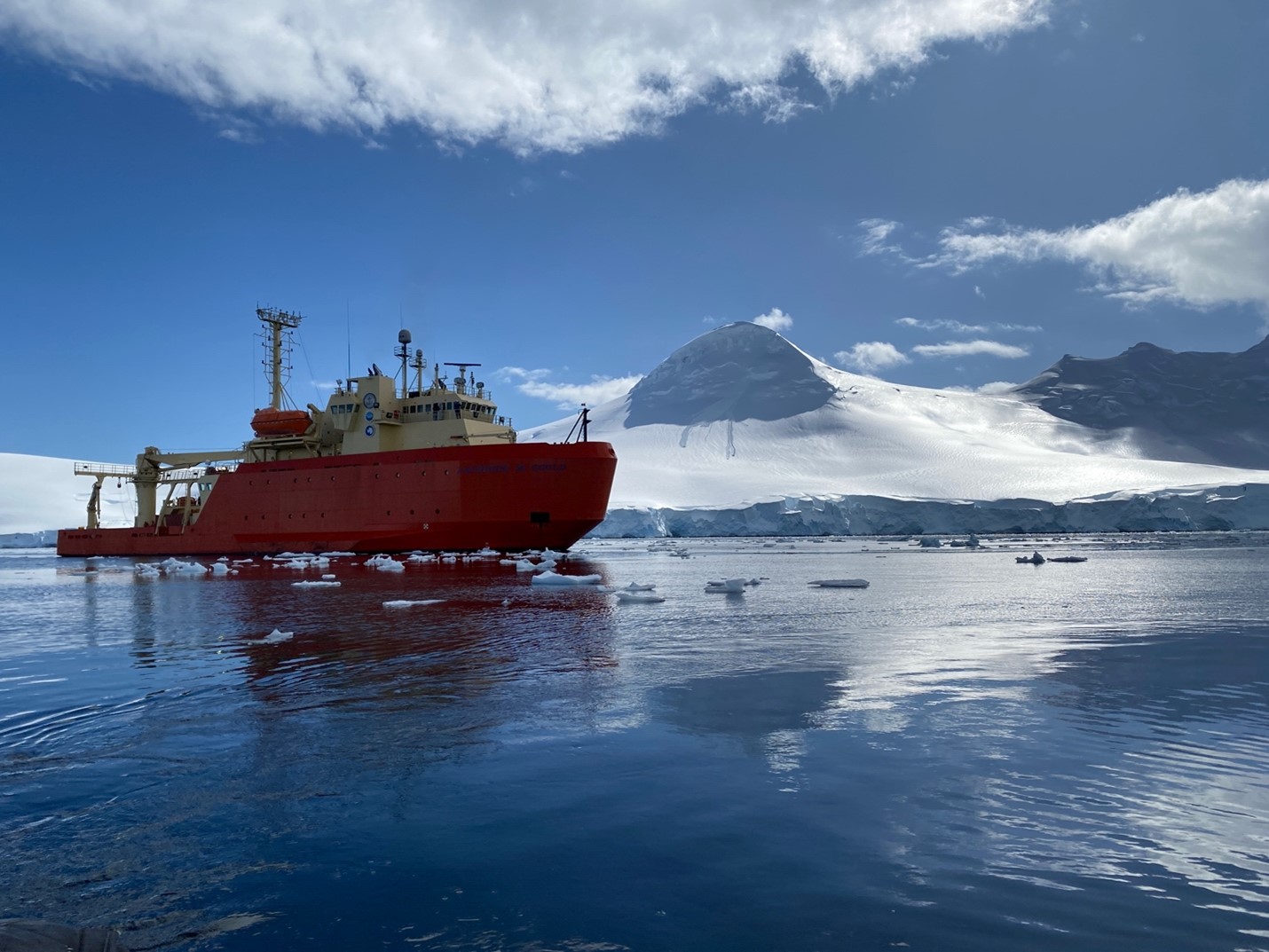By Carlyn Scott, Science Communications Assistant
Antarctica might seem like another world away. Indeed, it is, with some regions only accessible by a 12-day transit across the infamous Southern Ocean, where 30-foot swells are routine.
But what happens on the icy continent has repercussions globally.
Former Dean Dixon, who is now a professor, boosted the Southern Ocean Sciences (SOS) faculty group at the USF College of Marine Science (CMS). To her, the need for CMS to conduct research in this region made perfect sense. Antarctica has a global impact. The Southern Ocean fuels water masses that circulate throughout the entire world, transferring nutrients needed for primary production in surface waters, and capturing carbon from the atmosphere to store in the deep ocean.
I spoke with Dixon and the rest of our faculty involved in the CMS SOS group to learn more about their research, and why Floridians should care.
Starting with biologists Tom Hopkins (retired), Jose Torres (retired), Kendra Daly (current faculty), and geologist Ben Flowers (deceased), the SOS faculty group has grown into an interdisciplinary team of seven faculty. Members were attracted from national and international institutions to study the biological, chemical, geological, and physical aspects of the region and its influence on the world. The group has been busy.
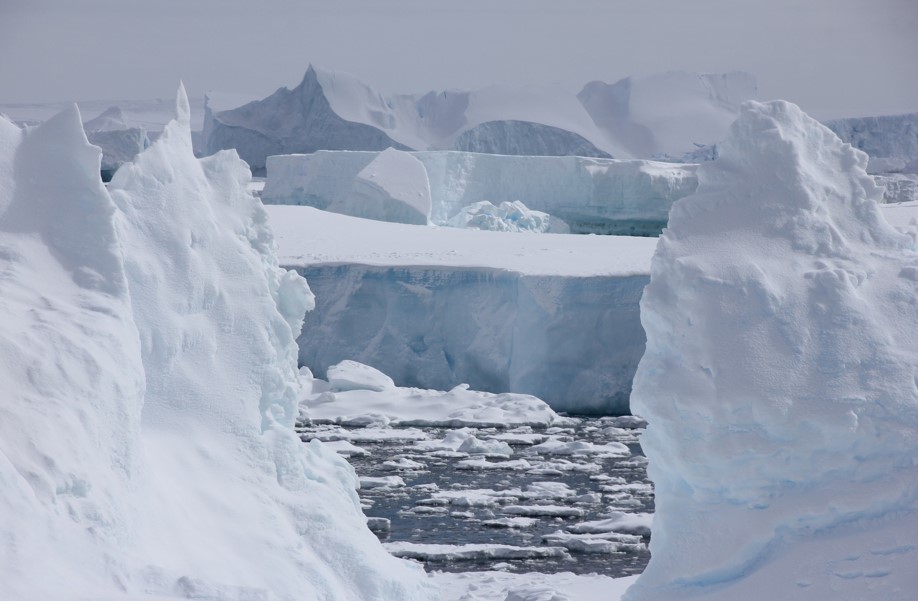
Icebergs, Totten Glacier East Antarctica. Understanding how glaciers were transformed in past climates helps researchers to predict the future of the ice in a warming climate. Photo credit: Amelia Shevenell
The Southern Ocean plays a pivotal role in the world’s oceans. On the continent, the melting of Antarctica’s ice sheets and shelves could cause a global sea level rise of 200 feet (~60 m). And Florida will be one of the first states to feel the effects. Since 2002, Antarctica has lost an average of 151 billion metric tons of ice mass (melting) per year – and sea levels have increased globally by 97 mm since 1993.
“I was very enthusiastic and supportive of trying to develop that group because Florida is probably the state with the greatest economic risk related to sea level rise,” said Dixon.
According to NOAA, even three feet of sea level rise will displace 4.2 million people across the U.S., with half of those being Florida residents. Last year’s storms, especially Ian and Nicole, were a grave reminder of the risks we face in the Sunshine State as climate warms.
Marine geophysicist Alastair Graham recently published work about the Thwaites Glacier in West Antarctica, which is about the size of Florida. For the first time, scientists mapped in high-resolution a critical area of the seafloor in front of the glacier that gives them a window into how fast Thwaites retreated and moved in the past. The results were alarming.
The rate of Thwaites’ retreat that scientists have documented more recently are small compared to the fastest rates of change in its past, said Graham. In short, it was faster in the past. In response to this study, Tom Frazer, dean of the CMS, said, “Just because it’s out of sight, we can’t have Thwaites out of mind.”
Physical oceanographer Don Chambers uses satellite gravity measurements to observe mass balance changes over ice sheets and its contribution to global sea level. “My research shows that Antarctica has at the moment, a fairly small contribution to current sea level rise – on the order of ½ a millimeter per year – but it is increasing.”
Since over 75% of Floridians live on the coast, how Antarctica will fare in warming climates holds significant consequences for this region’s infrastructure. “Floridians have to care about global sea level rise because what happens globally will affect us immediately,” said Chambers.
Other faculty research includes studying the ice on the continent to understand what the world will look like with warming temperatures.
Geological oceanographer Amelia Shevenell has been working on Antarctic ice since graduate school and was on the inaugural cruise of the US Antarctic Program ship the RV Gould in 1998, where she assisted with coring of the Palmer Deep. Now, Shevenell uses the marine sediment record – mud – from around Antarctica to understand how those ice sheets have changed on timescales from decades to millions of years. Shevenell uses this record to apply the past to the future.
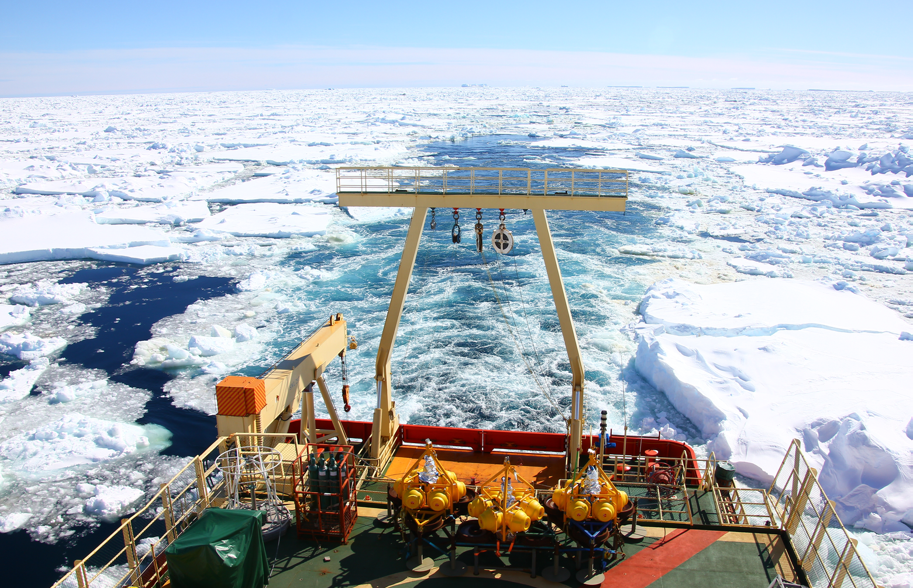
The RV Palmer transiting through sea ice near Totten Glacier, East Antarctica. Some regions of Antarctica are only accessible by a 12-day transit across the infamous Southern Ocean, where 30-foot swells are routine. Photo credit: Amelia Shevenell
“We can tell where and how fast ice advances and retreats,” said Shevenell, “as well as look at past ocean temperatures to figure out the why this process happened.”
Shevenell highlighted the influence that the Southern Ocean has on the rest of the planet. “The Earth is a system,” said Shevenell. “Even if something is not right in our field of view everyday doesn’t mean that it’s not important and doesn’t mean it isn’t driving our entire planet.”
Geological oceanographer Brad Rosenheim also works with Antarctic marine sediments. Specifically, Rosenheim uses radiocarbon dating techniques on sediment samples from around Antarctica to determine how fast ice retreated over the past 20,000 years.
“Knowing how sensitive glaciers are to natural climate change allows us to better train our models to figure out what Antarctica might do relative to anthropogenic climate change,” said Rosenheim.
These paleoclimate studies allow researchers to model how these ice sheets will respond to current and future climate change. This knowledge is critical to coastal populations as ongoing changing climate continues to cause significant challenges, like increased flooding and sea level rise. As Graham, Shevenell, Rosenheim, and Dixon pointed out, geology is the long game.
“Red tide can happen tomorrow, which is an acute affliction caused by short term processes,” said Rosenheim. “Anything climate change related is not as acute but has the potential to be more costly – both to society and life on our planet.”
Dixon agrees. Studying the past will help us with the future – to a point. “We need to understand the rate at which the planet can change,” she said. “But we are changing the climate so much faster than natural processes observed in the geologic record.”
Warming temperatures will also impact the Antarctic Circumpolar Current (ACC), the powerhouse of the global circulation system that transfers water masses through the world, regulating the earth’s temperature.
Chemical oceanographer Tim Conway has been working on this region for the last ten years, trying to figure out the interactions of trace element supply, productivity, carbon cycling and circulation in Antarctica, a critical hub of nutrient cycling in the oceans.
Conway is especially interested in trace metals in seawater – chiefly iron, zinc, and manganese that control phytoplankton growth and photosynthesis – that the Southern Ocean helps distribute.
As Conway says, Antarctica is where nutrient rich water is upwelled, which spreads out through the oceans, essentially controlling the distribution of nutrients everywhere else.
“What happens in the surface of Antarctica doesn’t stay in the Antarctic,” said Conway.
Biological oceanographer Kendra Daly agrees that the Southern Ocean is critically important to all life on the earth. The Southern Ocean absorbs more heat from the atmosphere than any other region and absorbs more carbon dioxide from the atmosphere than it releases. So far, this has been a benefit to the rest of the world.
For four decades, Daly has been studying zooplankton in the Southern Ocean and Antarctica, starting with krill acoustic surveys in the early 80’s. Daly, Hopkins, and Torres participated in the AMERIEZ (Antarctic Marine Ecosystem Research at the Ice Edge Zone) program in the 1980’s, which showed that the ice edge zone is region of enhanced production and that the annual advance and retreat of the pack ice affects the seasonal dynamics of the regional food web. Daly investigated the vital role of sea ice in the overwintering survival of krill, small, shrimp-like animals that are commercially fished and support the unique Southern Ocean ecosystems. (Daly then joined the faculty at CMS in 2001 to collaborate with Tom Hopkins and Jose Torres.)
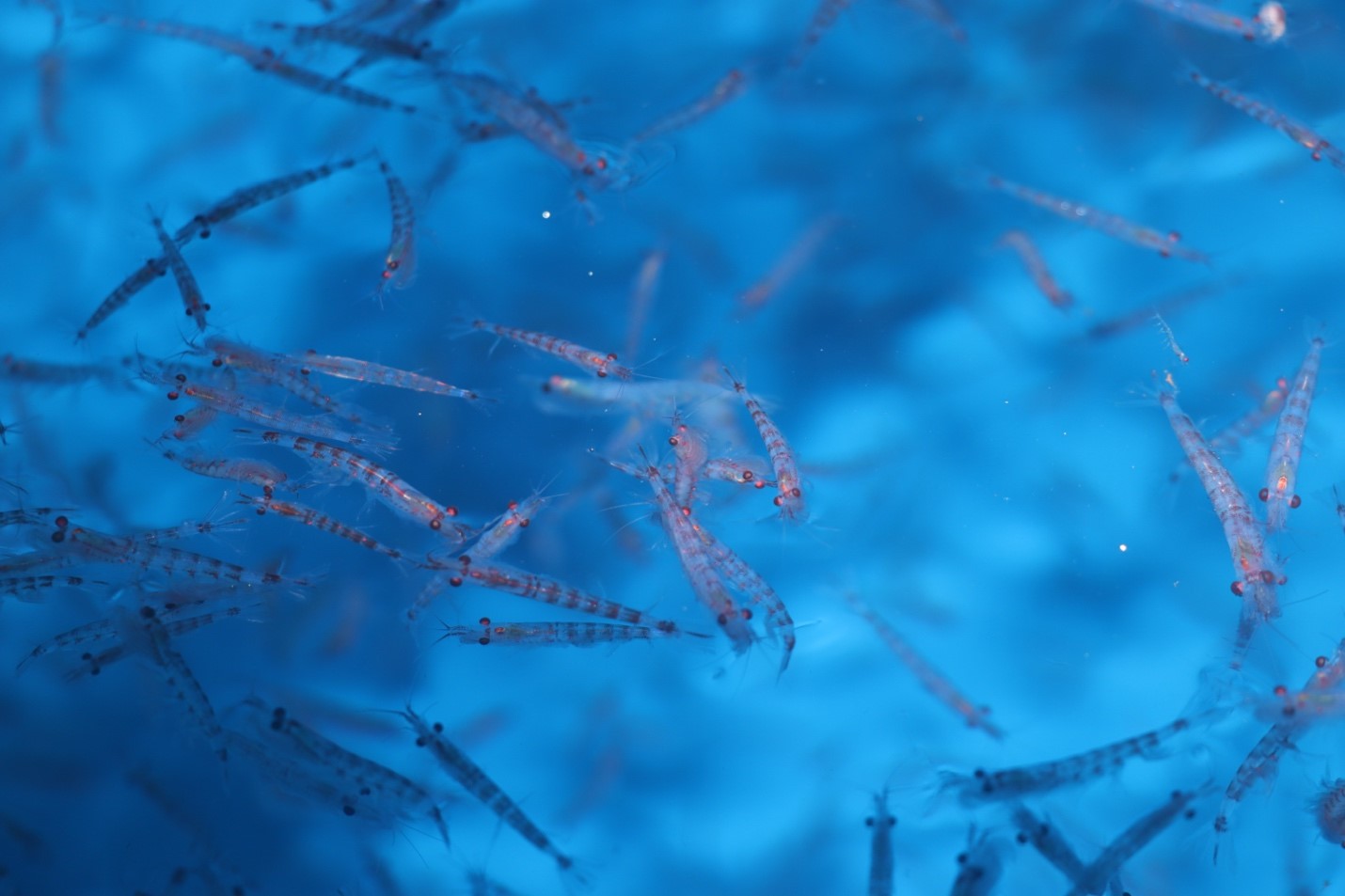
Antarctic krill, the foundation of the Southern Ocean food web.
“Floridians need to be concerned about all oceans, because the oceans are so closely tied with what makes the Earth habitable for humans and our ability to survive on this planet,” said Daly. “We need to think more broadly and beyond our own backyards in terms of what is important to study.”
Since the SOS group was founded, the college has contributed a large amount of interdisciplinary research to this globally significant region.
“The college is interested in global processes and things that influence the planet that we live on,” said Frazer, who has researched nutrient and physical processes impact on Southern Ocean ecosystems. “So many large-scale processes occur in the Southern Ocean that it is hard to ignore this region if you want to understand global oceans.”
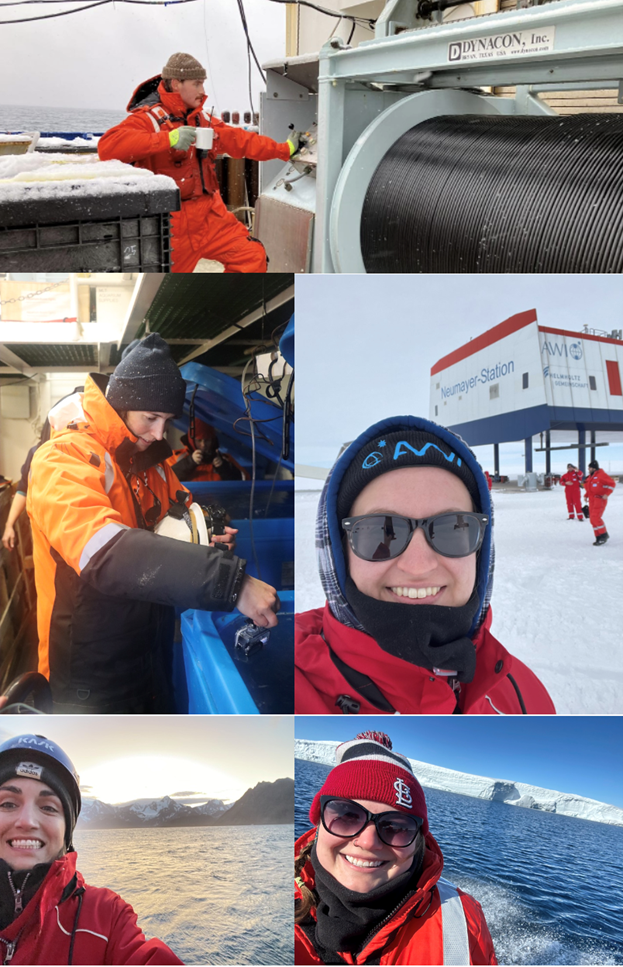
The future of SOS: Students of SOS faculty have been traveling to the Southern Ocean and Antarctica for years. Here is a short list of those who went this year: Dylan Halbeisen (top-Conway), Carlyn Scott (middle left-Daly), Rosemary Burkhalter-Castro (middle right-Graham), Catalina Rubiano (bottom left-Graham), and Emily Kaiser (bottom right-Shevenell).
